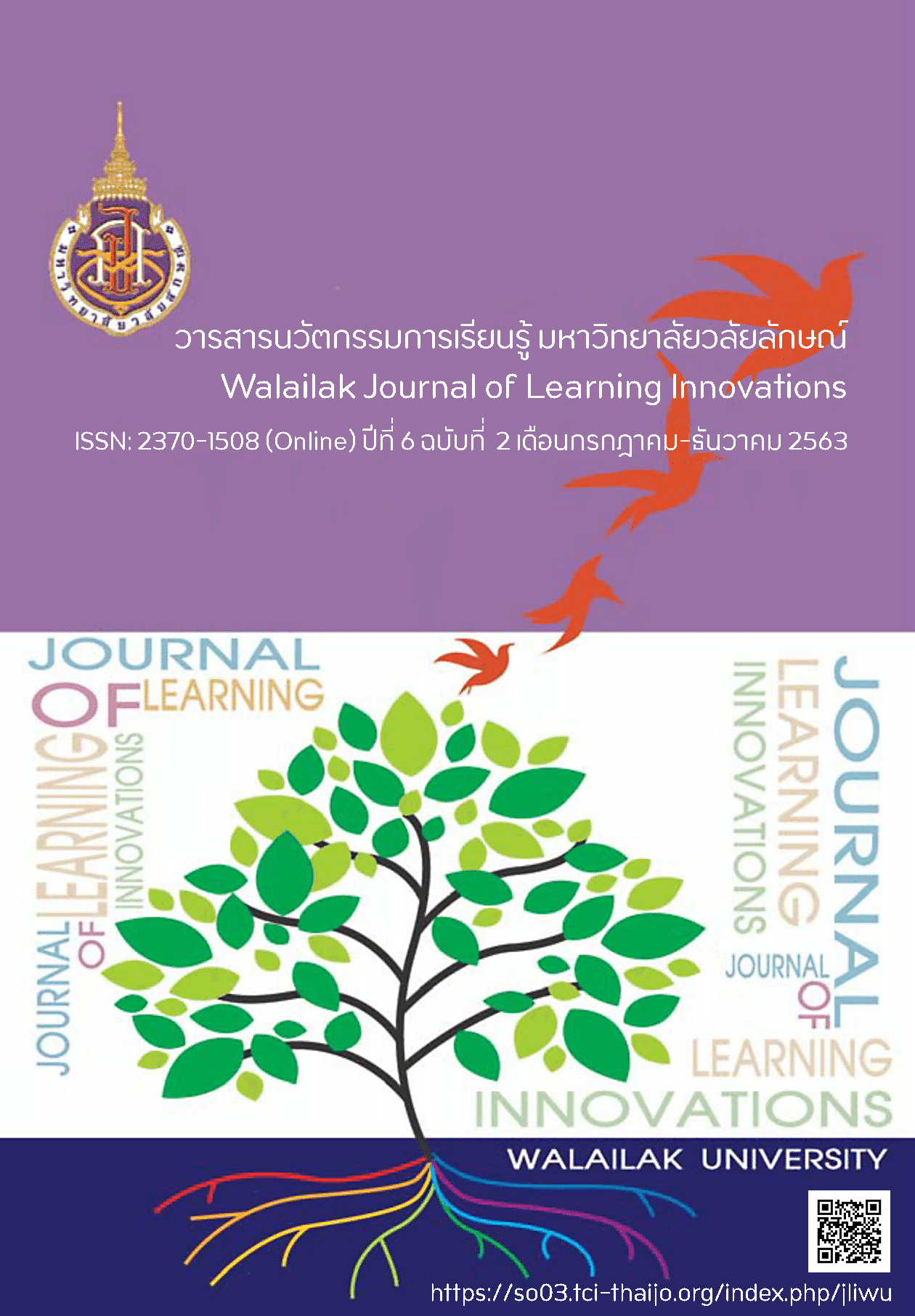Development of Teaching and Learning in Intensive Course Training : Basic Wood working for Undergraduate students by using Bloom's Taxonomy
DOI:
https://doi.org/10.14456/jli.2020.14Keywords:
Development of Teaching and Learning, Basic of Woodworking, Bloom’s TaxonomyAbstract
This Research is: Development of Teaching and Learning of Woodworking (Intensive Course Training : Basic Wood working) for undergraduate students. To the 3 objectives are: 1) To use learning theory of Bloom's Taxonomy to create lessons for teaching and learning of Basic Woodworking . 2) To identify the opinions of the students that cause the development of Cognitive Domain such as Remembering, Understanding, Applying, Analysis, Evaluation, and Creativity. 3) To identify opinions of 3 experts such as academic professor in furniture design, professional in furniture design and testing the strength structure of furniture.
The target sample group is 30 students who are studying in the first-second year in Assumption University.
The research methodology has four steps as followed:
Step 1 Development of teaching and learning to use learning theory of Bloom’s Taxonomy is conceptual framework the tools used in the research consisted of Lesson Plan, Course Outline and Teaching Techniques.
Step 2 Trial in teaching and learning the tools used in the research are Design lessons Teaching materials and teaching materials, basic woodworking, teaching methods.
Step 3 To Find opinions of 30 students. Rise to have cognitive domain development, such as Remembering & Knowledge, Understanding, Applying, Analysis, Evaluation and Creativity.
Step 4 To find opinions of 3 experts such as academic professor in furniture design, professional in furniture design and Testing the strength structure of furniture.
Collected data were analyzed by SPSS program, statistic tools were comprised of mean, standard deviation and percentage.
The results are:
Thirty learners evaluated 6 factors were Cognitive Domain development : Remembering, Understanding, Applying, Analysis, Evaluation and Creativity. A total average the resulted score was 4.58 meaning is very good level.
References
Anderson, L. W., & Sosniak, L. A. (Ed.). (2014). Bloom's Taxonomy of Educational objectives: A forty-year retrospective. Oaks, CA: National Society for the Study of Education
Fiell, C., Fiell, P., & Philippi, S. (2002). 1000 Chairs. Paris, France: Taschen.
Gandy, C. D., & Zimmerman-Stidham, S. (1981). Contemporary Classics Furniture of the Masters. NY: McGraw-Hill.
Kaewmanee, T. (2004). kôo meu mâat-dtrà-tăan láe gaan tót sòp krêuang reuan. [Manual of Industrial Standardization and Furniture Testing]. Bangkok, Thailand: Composites Bureau of Industrial Sector Development Department of Industrial Ministry
Phison, C. (2012). krêuang jàk gon ngaan mái. [Power Tools of Woodworking]. Bangkok, Thailand: Se-Education Public.
Pile, J. F. (1990). Furniture: Modern and Postmodern, Design & Technology. NJ: Wiley.
Saributr, U. (2002). gaan òk bàep fer-ní-jer song. [Furniture design II]. Bangkok, Thailand: Faculty of Industrial Education & Science of Technology, King Mongkut's Institute of Technology Ladkrabang.
Wilk, C. (2015). Thonet: 150 Years of Furniture. NY: Barron’s Educational Series.
Ruengsuwan, C. (2003). ték-noh-loh-yee gaan sèuk-săa · trít-sà-dee láe gaan wí-jai. [Technology Education. Theory and Research]. Bangkok, Thailand. Odien Store Publishing.
Downloads
Published
How to Cite
Issue
Section
License
เนื้อหาและข้อมูลในบทความที่ลงตีพิมพ์ในวารสารนวัตกรรมการเรียนรู้ มหาวิทยาลัยวลัยลักษณ์ ถือเป็นข้อคิดเห็นและความรับผิดชอบของผู้เขียนบทความโดยตรง ซึ่งกองบรรณาธิการวารสาร ไม่จำเป็นต้องเห็นด้วย หรือร่วมรับผิดชอบใดๆ
บทความ ข้อมูล เนื้อหา รูปภาพ ฯลฯ ที่ได้รับการตีพิมพ์ในวารสารนวัตกรรมการเรียนรู้ มหาวิทยาลัยวลัยลักษณ์ ถือเป็นลิขสิทธิ์ของวารสารนวัตกรรมการเรียนรุ้ มหาวิทยาลัยวลัยลักษณ์ หากบุคคลหรือหน่วยงานใดต้องการนำทั้งหมดหรือส่วนหนึ่งส่วนใดไปเผยแพร่ต่อเพื่อกระทำการใดๆ จ้อต้องได้รับอนุญาตเป็นลายลักษณ์อักษรจากวารสารนวัตกรรมการเรียนรู้ มหาวิทยาลัยวลัยลักษณ์ก่อนเท่านั้น


